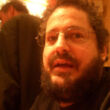2312
(Libby/OverDrive eBook, Kindle)
Available Platforms
Description
More Details
Excerpt
Similar Titles From NoveList
Similar Authors From NoveList
Published Reviews
Booklist Review
*Starred Review* Robinson continues the themes he introduced in his Hugo and Nebula Award-winning Mars trilogy environmentalism, planetary transformation, social experimentation, technological evolution in this wonderful novel set three centuries from now. There is a linear story (a woman, Swan, is determined to uncover the potentially catastrophic secrets behind a project her recently deceased grandmother was working on), but it's the story's milieu that makes the book so rich and satisfying. In the Mars trilogy, Robinson was focused on a single world; here, he's juggling many of them: Mercury, Venus, Earth, the moons of Jupiter and Saturn all colonized by humans, all with their own unique societal structures and physical environments (a city on Mercury, for example, moves constantly on tracks, staying ahead of the fatally hot sun). Swan moves back and forth between the worlds, sometimes in hollowed-out asteroids that have been transformed into space-traveling colonies, and, piece by piece, the author builds a tactile, completely real future society. The book won the Nebula Award for best novelin 2012;it richly deserved the honor then, and it has held up superbly. It's a magnificent achievement, a hugely imaginative and beautifully written companion piece to, but not a direct continuation of, the Mars trilogy.--Pitt, David Copyright 2015 Booklist
Publisher's Weekly Review
Robinson (Galileo's Dream) delivers a challenging, compelling masterpiece of science fiction. In a spectacularly depicted future of interplanetary colonization, humanity has spread across the entire solar system, from miniature biomes in hollowed-out asteroids to a moving city racing the fatal rays of the sun on Mercury. Mercurian artist and biome designer Swan Er Hong is struggling to cope with her grandmother's death and an unexpected meteor strike when she gets caught up in a scientific conspiracy that touches on both the political and economic schemes of space-based humans, including Saturn's ring-surfing moon dwellers and the secretive factions controlling slowly terraforming Venus, as well as the quasi-independent quantum computers called qubes. As Swan, the saturnine diplomat Fitz Wahram, and interplanetary investigator Jean Genette delve into the possible connections among a series of mysterious incidents, Robinson's extraordinary completeness of vision results in a magnificently realized, meticulously detailed future in which social and biological changes keep pace with technological developments. Agent: Ralph Vincinanza, Ralph Vincinanza Agency (author now represented by Christopher Schelling, Selectric Artists). (May) (c) Copyright PWxyz, LLC. All rights reserved.
Library Journal Review
In the year 2312, humans have developed the technology to colonize most of the solar system, including Mercury, which boasts a single city that travels on rails around the planet just ahead of the rising sun. When Swan Er Hong arrives to mourn her recently deceased grandmother Alex, one of Mercury's movers and shakers, Swan realizes how little she knew about the woman who raised her. Meeting some of Alex's scientific friends reveals to Swan that mysterious projects were in the works and that she must uncover her grandmother's secrets before they destroy not only Mercury but the entire solar system. VERDICT The award-winning Robinson ("The Mars Trilogy"; Fifty Degrees Below) delivers a feast for advanced technology fans and future history aficionados with this intriguing portrait of a solar system economy based on the mining of the asteroid belt. Despite their genetically engineered adaptations to their galactic colonies, his well-drawn characters resonate with traits that emphasize their humanity. (c) Copyright 2012. Library Journals LLC, a wholly owned subsidiary of Media Source, Inc. No redistribution permitted.
Kirkus Book Review
Another textbook disguised as a novel: the first of a projected trilogy from Robinson (Galileo's Dream, 2009, etc.) set in a future similar to that envisioned in his Mars trilogy from the 1990s. By the 24th century, humanity has established settlements throughout the solar system on terraformed moons and planets and inside habitats hollowed from conveniently orbiting asteroids. Travel to the most remote destination takes mere weeks; quantum computers, qubes, are ubiquitous but have not yet reached true sentience. Former habitat designer Swan Er Hong makes her home on Mercury, where the city of Terminator crawls around the planet on rails, perpetually keeping just ahead of the rising sun. Her beloved grandmother, Alex, has just died. Two individuals, diminutive investigator Jean Genette and Wahram, a huge, froglike negotiator, wonder whether Swan's recently deceased, beloved grandmother Alex left any information about her work--Alex studied Earth which, despite mass emigration, remains a basket case of environmental degradation, climate change and vampire capitalism. Then Swan, who has a qube named Pauline inside her head and once swallowed a cocktail of alien bacteria from Enceladus, and Wahram narrowly escape when Terminator is destroyed by an undetectable shower of meteorites directed from somewhere in space. Seems Alex, who distrusted qubes and all forms of electronic communication, had good reason for her paranoia: apart from the mysterious group who destroyed Terminator, somebody is building humanoid bodies operated by qubes, for purposes none of the three can guess. Other than Robinson's usual novelistic virtues, the narrative offers a grand tour of the inhabited worlds, often to excess, plus padding with 18 future-factual "extracts" to fill in the background, 15 rather bizarre "lists" (e.g. space accidents, propulsion systems) and three passages representing the mental processes of the humanoid qubes. A small, clever novel obscured rather than enlightened by philosophy, synthesis, analysis and travelogue.]] Copyright Kirkus Reviews, used with permission.
Booklist Reviews
*Starred Review* Robinson continues the themes he introduced in his Hugo and Nebula Award–winning Mars trilogy—environmentalism, planetary transformation, social experimentation, technological evolution—in this wonderful novel set three centuries from now. There is a linear story (a woman, Swan, is determined to uncover the potentially catastrophic secrets behind a project her recently deceased grandmother was working on), but it's the story's milieu that makes the book so rich and satisfying. In the Mars trilogy, Robinson was focused on a single world; here, he's juggling many of them: Mercury, Venus, Earth, the moons of Jupiter and Saturn—all colonized by humans, all with their own unique societal structures and physical environments (a city on Mercury, for example, moves constantly on tracks, staying ahead of the fatally hot sun). Swan moves back and forth between the worlds, sometimes in hollowed-out asteroids that have been transformed into space-traveling colonies, and, piece by piece, the author builds a tactile, completely real future society. The book won the Nebula Award for best novelin 2012;it richly deserved the honor then, and it has held up superbly. It's a magnificent achievement, a hugely imaginative and beautifully written companion piece to, but not a direct continuation of, the Mars trilogy. Copyright 2014 Booklist Reviews.
Library Journal Reviews
In the year 2312, humans have developed the technology to colonize most of the solar system, including Mercury, which boasts a single city that travels on rails around the planet just ahead of the rising sun. When Swan Er Hong arrives to mourn her recently deceased grandmother Alex, one of Mercury's movers and shakers, Swan realizes how little she knew about the woman who raised her. Meeting some of Alex's scientific friends reveals to Swan that mysterious projects were in the works and that she must uncover her grandmother's secrets before they destroy not only Mercury but the entire solar system. VERDICT The award-winning Robinson ("The Mars Trilogy"; Fifty Degrees Below) delivers a feast for advanced technology fans and future history aficionados with this intriguing portrait of a solar system economy based on the mining of the asteroid belt. Despite their genetically engineered adaptations to their galactic colonies, his well-drawn characters resonate with traits that emphasize their humanity.
[Page 96]. (c) Copyright 2012. Library Journals LLC, a wholly owned subsidiary of Media Source, Inc. No redistribution permitted.Library Journal Reviews
Political and economic struggles within the solar system threaten the existence of Mercury's only city and bring to light old grievances between colonists of the "near-Earth" planets and the miners of the asteroids and Jovian moons. An sf masterpiece. (LJ 3/15/12) (c) Copyright 2011. Library Journals LLC, a wholly owned subsidiary of Media Source, Inc. No redistribution permitted.
Publishers Weekly Reviews
Robinson (Galileo's Dream) delivers a challenging, compelling masterpiece of science fiction. In a spectacularly depicted future of interplanetary colonization, humanity has spread across the entire solar system, from miniature biomes in hollowed-out asteroids to a moving city racing the fatal rays of the sun on Mercury. Mercurian artist and biome designer Swan Er Hong is struggling to cope with her grandmother's death and an unexpected meteor strike when she gets caught up in a scientific conspiracy that touches on both the political and economic schemes of space-based humans, including Saturn's ring-surfing moon dwellers and the secretive factions controlling slowly terraforming Venus, as well as the quasi-independent quantum computers called qubes. As Swan, the saturnine diplomat Fitz Wahram, and interplanetary investigator Jean Genette delve into the possible connections among a series of mysterious incidents, Robinson's extraordinary completeness of vision results in a magnificently realized, meticulously detailed future in which social and biological changes keep pace with technological developments. Agent: Ralph Vincinanza, Ralph Vincinanza Agency (author now represented by Christopher Schelling, Selectric Artists). (May)
[Page ]. Copyright 2012 PWxyz LLCReviews from GoodReads
Citations
Robinson, K. S. (2012). 2312 . Orbit.
Chicago / Turabian - Author Date Citation, 17th Edition (style guide)Robinson, Kim Stanley. 2012. 2312. Orbit.
Chicago / Turabian - Humanities (Notes and Bibliography) Citation, 17th Edition (style guide)Robinson, Kim Stanley. 2312 Orbit, 2012.
Harvard Citation (style guide)Robinson, K. S. (2012). 2312. Orbit.
MLA Citation, 9th Edition (style guide)Robinson, Kim Stanley. 2312 Orbit, 2012.
Copy Details
| Collection | Owned | Available | Number of Holds |
|---|---|---|---|
| Libby | 2 | 1 | 0 |
































